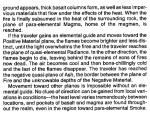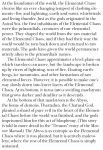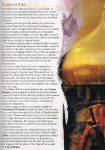Ah the 4e changes... yeah, I forgot about those. 4e seemed to lean hard into cross-planar stuff (what with Keep On The Shadowfell being the de facto introductory adventure) and seemed like it was really trying to make fey stuff the next big thing.
Perhaps divisively, I find the actual configuration of the D&D cosmos to be entirely irrelevant. Players always "blip" around from plane to plane; it's not like they follow an actual cosmic spoke to an actual cosmic wheel hub and cross planes like some sort of geopolitical border. If a party travels to the Nine Hells, for example, the DM very rarely makes them trek through the Astral Plane to get there. It's more like "I cast Plane Shift and we are in Hell now".
It didn't stop with 4e though. See this depiction of the elemental planes in the 5e DMG:
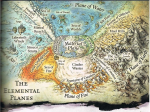
What I'm most interested to hear/read about it successful and novel planear adventures in the context of material-plane rooted campaigns. Similarly with planetary excursions.
So, Eberron thing, the Eberron planes are different from the rest of the D&D planes. Instead of representing alignments, they represent concepts. So there is a plane of dreams, and a plane of war. And Fernia, the Sea of Fire, doesn't just contain fire in the "4 humours" sense, but instead represents the destructive nature of fire, and people's fear of it.
But what brings it home to the material plane, is that the planes have a direct impact on the world. The planes move in and out of alignment with Eberron, and it makes a difference whether a plane is "coterminous", waxing or waning, or "remote". So if Fernia is coterminous, fires are more likely to get out of control, and fire spells might be more effective; but when Fernia is remote, it might be harder to start fires or keep them going, and fire spells might be less effective. So the original 3e cosmology looked like this:
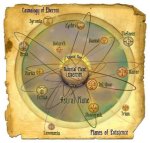
Not only that, but there are permanent "manifest zones" in the world, where a particular plane may have a greater influence on the world, and one or more aspects of that plane may be duplicated in the material world. And often those manifest zones, when they are discovered, are tapped for their particular properties. So the city of Sharn, for instance, is located in a manifest zone to Syrania, the Azure Sky, and is impacted by the quality of that plane that allows things that are up to stay up. So in Sharn you can jump further, and flying spells enhanced, and it affects the architecture because they can build these enormously tall towers, and the local cabs are small airships (basically a flying carpet shaped like a boat) which only work within the manifest zone.
Manifest zones can also act as portals for planar travel, especially if the plane in question is coterminous. So long before the PCs have access to that kind of magic, they could find themselves in a situation where they need to go into a plane via a manifest zone, and get out before the plane ceases to be coterminous. Or there could be a portal to Shavarath, the Battleground, which opens whenever blood is shed in a particular manifest zone.
There can also be planar incursions. By default, an Eberron campaign is set during a period where creatures from Dal Quor, the Region of Dreams, are possessing people and putting into effect plans to influence people's dreams on a world-wide scale, because they believe people's dreams can impact on the environment in Dal Quor. And fiends from Khyber frequently enter the material plane to try to free the demonic Overlords from their prisons, by influencing mortals to do things that satisfy the conditions of certain prophecies.



